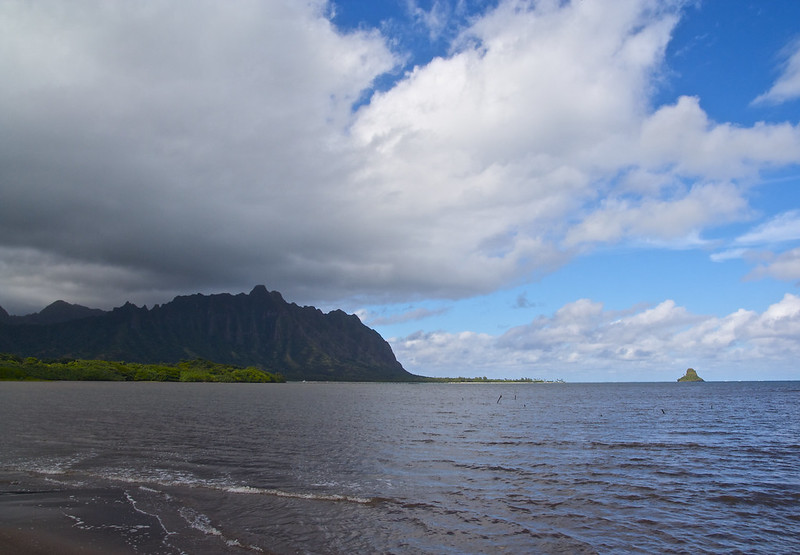Pearl Harbor, located on the island of Oahu in Hawaii, stands as one of the most significant historical sites in the United States. The events of December 7, 1941, when Japanese forces launched a surprise attack on the naval base, changed the course of history, propelling the U.S. into World War II. Today, the Pearl Harbor National Memorial honors the lives lost and serves as a place of reflection and education.
For history enthusiasts, veterans, and tourists alike, a visit to Pearl Harbor offers a chance to walk through history, learn about the attack’s lasting impact, and pay homage to those who served. This comprehensive guide explores the history of Pearl Harbor, highlights key attractions at the memorial, and provides practical tips for planning your visit.
1. Understanding the History of Pearl Harbor
The Attack on Pearl Harbor
On the morning of December 7, 1941, Japanese aircraft launched a devastating assault on the U.S. naval base at Pearl Harbor. The attack, which lasted just over two hours, targeted battleships, airfields, and other strategic installations. Key events of the attack include:
- Battleship Row: Several U.S. Navy battleships were stationed along Battleship Row, including the USS Arizona, USS Oklahoma, and USS West Virginia. Many were severely damaged or sunk during the attack.
- Casualties: Over 2,400 Americans lost their lives, including military personnel and civilians. The USS Arizona alone accounted for nearly half of the fatalities, with over 1,100 crew members trapped aboard when the ship sank.
- Aftermath: The attack shocked the nation and led President Franklin D. Roosevelt to declare war on Japan the following day, marking the U.S.’s entry into World War II.
Historical Significance
Pearl Harbor was a turning point in global history, marking the beginning of the Pacific War. It also underscored the importance of naval power and intelligence in modern warfare. The events of that day remain a solemn reminder of the cost of war and the resilience of those who served.
2. Key Attractions at Pearl Harbor National Memorial
The Pearl Harbor National Memorial encompasses several sites that provide visitors with a comprehensive understanding of the attack, its aftermath, and its legacy. Here are the key attractions:
USS Arizona Memorial
The USS Arizona Memorial is the centerpiece of Pearl Harbor. Built over the remains of the sunken battleship, the memorial honors the 1,177 sailors and Marines who lost their lives aboard the Arizona.
- What to Expect: Visitors take a boat ride to the memorial, where they can see the ship’s remains below the water’s surface. The memorial also features a wall inscribed with the names of those who perished.
- Significance: Oil still leaks from the USS Arizona, often referred to as “black tears,” serving as a poignant reminder of the lives lost.
Battleship Missouri (Mighty Mo)
The USS Missouri, located nearby, symbolizes the end of World War II. It was aboard this ship that Japan formally surrendered to the Allies on September 2, 1945.
- What to Expect: Visitors can explore the ship’s decks, learn about its history, and stand on the Surrender Deck where the treaty was signed.
- Why It’s Important: The USS Missouri connects Pearl Harbor’s tragic beginning with the war’s triumphant conclusion.
Pacific Fleet Submarine Museum and USS Bowfin
The USS Bowfin, a World War II submarine, and the adjacent museum offer insights into the role of submarines in the war.
- What to Expect: Step aboard the USS Bowfin to experience life in a submarine, and explore exhibits showcasing submarine warfare tactics and artifacts.
- Interesting Fact: The Bowfin is nicknamed the “Pearl Harbor Avenger” for its service in the Pacific following the attack.
Pearl Harbor Aviation Museum
Housed in historic hangars on Ford Island, the Pearl Harbor Aviation Museum showcases the role of air power during World War II.
- What to See: Exhibits include restored aircraft, interactive displays, and remnants of bullet-riddled hangars from the attack.
- Why It’s Unique: The museum provides a deeper understanding of aviation’s impact on the war effort and its evolution over time.
3. Planning Your Visit
Ticketing and Reservations
- USS Arizona Memorial: Tickets are free but require advance reservations through the National Park Service website. Same-day tickets may be available, but they are limited.
- Other Attractions: The Battleship Missouri, USS Bowfin, and Pearl Harbor Aviation Museum charge admission fees. Combination tickets are available for a comprehensive experience.
Getting There
- Location: Pearl Harbor is located near Honolulu, approximately 10 miles from Waikiki Beach. It’s easily accessible by car, public transportation, or guided tours.
- Parking: Free parking is available at the visitor center.
Visitor Tips
- Arrive early to avoid crowds and ensure you have ample time to explore each site.
- Wear comfortable shoes, as you’ll be walking a lot.
- Bring sunscreen, water, and a hat, as much of the memorial is outdoors.
- Security restrictions prohibit bags, so bring only essentials.
4. Experiencing the Memorial
Visiting Pearl Harbor is a deeply emotional experience. As you walk through the memorial and its exhibits, you’ll gain a deeper appreciation for the sacrifices made during the attack and the resilience of the survivors.
Guided Tours
Guided tours offer a wealth of knowledge and context, often led by knowledgeable docents or veterans. Audio tours are also available for those who prefer to explore at their own pace.
Interactive Exhibits
The visitor center features interactive exhibits, films, and displays that provide historical background on the events leading up to the attack and its aftermath. These exhibits are a great starting point for understanding the significance of Pearl Harbor.
5. Honoring the Legacy
Pearl Harbor is more than a historical site—it’s a place of remembrance and reflection. The memorial ensures that the stories of those who served and sacrificed are never forgotten. Here are a few ways to honor the legacy of Pearl Harbor:
- Pay Your Respects: Leave a flower or lei at the USS Arizona Memorial to honor those who lost their lives.
- Support Preservation Efforts: Donations and volunteer opportunities help maintain the memorial and its programs.
- Learn and Share: Educate yourself about the events of Pearl Harbor and share the stories with others to keep the memory alive.
Conclusion: A Journey Through History
Visiting Pearl Harbor is a profound experience that connects you to a pivotal moment in history. The memorial serves as a tribute to the bravery and sacrifice of those who served, while also educating visitors about the lasting impact of the attack on the world. Whether you’re exploring the USS Arizona Memorial, walking the decks of the USS Missouri, or learning about aviation history, Pearl Harbor offers a journey of reflection and discovery.
By taking the time to visit and understand the significance of Pearl Harbor, you contribute to preserving the memory of those who fought to protect freedom. It’s a reminder of the resilience of the human spirit and the importance of peace in a world shaped by conflict.



